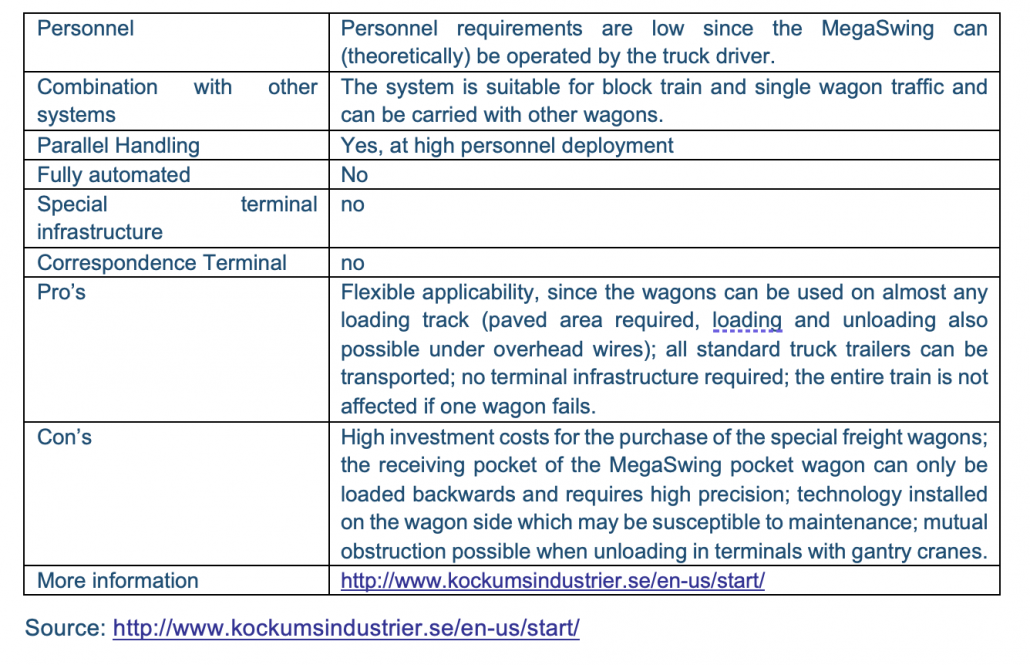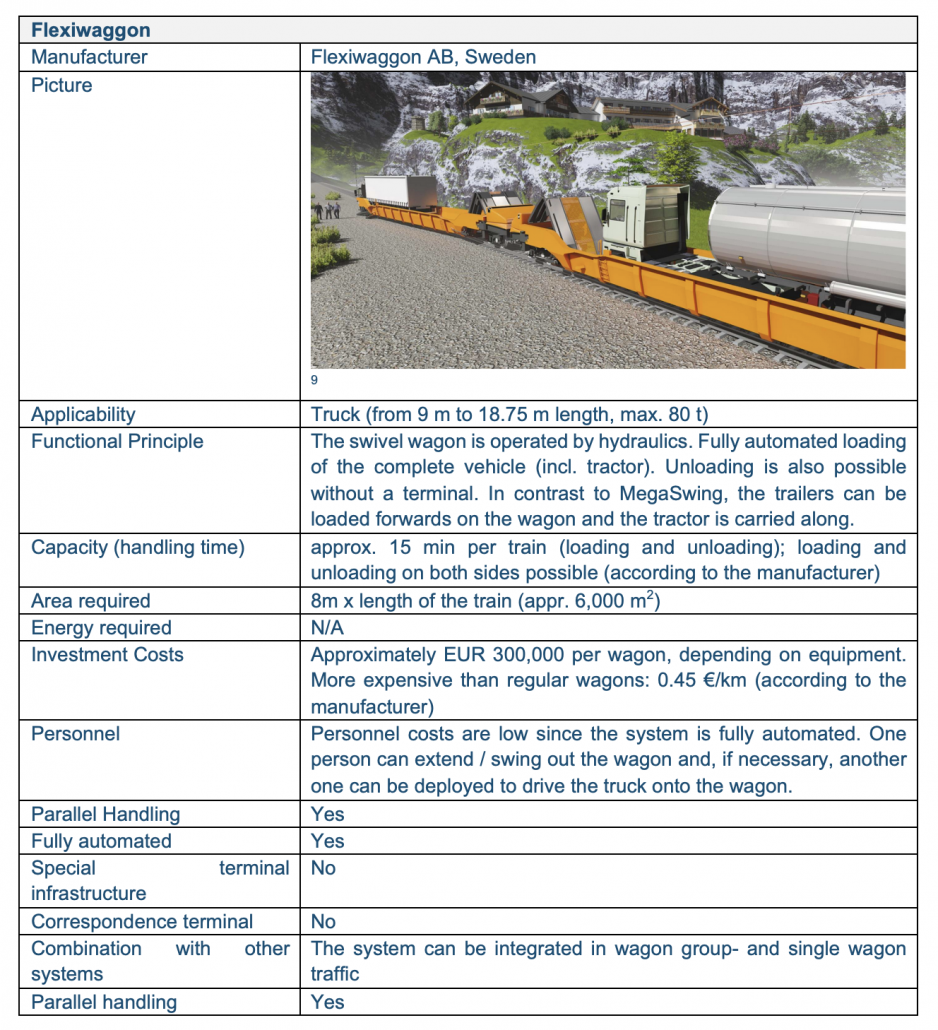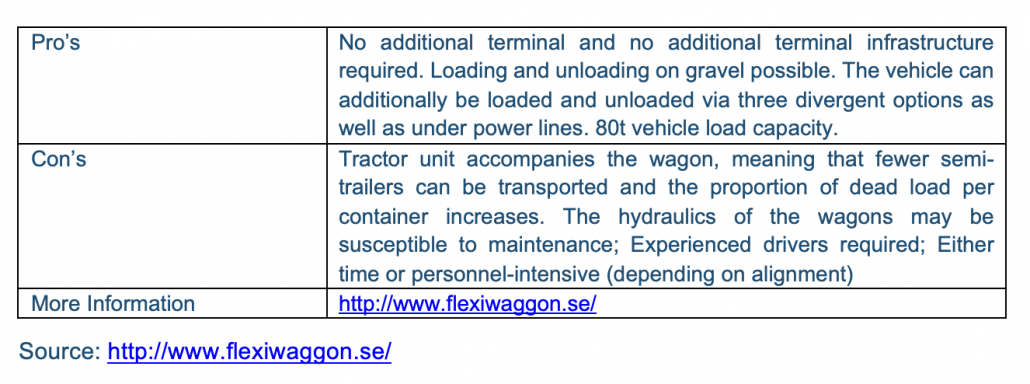Comparable to the innovative vertical handling technologies, horizontal systems are mainly used for non-craneable loading units. In the light of the increasing demand for transport of semi-trailers by rail, these horizontal technological systems have been developed to facilitate and increase the efficiency of transshipment—although cost-effectiveness and compatibility of the systems have to be evaluated on a case-to-case basis.
The main characteristic of horizontal transshipment systems is that during the handling process the loading units are not raised at all or just slightly in order to be removed from the attachment of the transport carrier. Horizontal means that the loading unit is handled transversely, longitudinally or diagonally to the transport carrier. This system is particularly suitable for transshipment between trucks and trains.
No special equipment is required for horizontal-longitudinal transshipment, as the loading unit either travels independently onto the means of transport (truck) or is driven by means of a special terminal tractor (semi-trailers in the RoRo process). Special handling equipment is required for horizontal-parallel and diagonal handling. Horizontal-diagonal transshipment is a special requiring specific terminal infrastructure. In addition, special wagons are needed (Table 6.1).
Table 6.1. Horizontal handling according to type of movement.

6.2.1 Ro-La
Ro-La describes the loading of the complete truck, including tractor and loading unit, onto the rail. Loading is carried out by means of a mobile loading ramp (without additional handling equipment). Then the truck is driven onto the pocket wagons by the driver himself. In other words, Ro-La can be described as the system of transporting a lorry by rail on a special rail wagon. The truck, i.e., tractor unit with semi-trailer or truck with trailer, travels specific sections of its route across Europe by rail—thus combining road and rail transport in this valuable combination. It is worth mentioning that the Ro-La loading system is called sequential loading (one vehicle after another through a moving ramp). At this point, it is worth mentioning the advantages and disadvantages of the Ro-La reloading system.
The main economic advantages include: cost savings (e.g., fuel and toll), time saving by avoiding traffic jams, and bypassing night and weekend driving bans (i.e., a driver can comply with statutory rest period without interrupting transport).
The main environmental advantages are: reduction of GHG emissions (e.g., CO2) due to transport by rail instead of by road, high personnel costs (i.e., not only the train conductor but also the truck drivers take part in the transport), and high dead load (i.e., weight of the tractor unit), as the cab or tractor apart from the semi-trailer unit is also transported.
In practice, Ro-La is only profitable on a few routes, usually over long distances with geographical obstacles (e.g., mountains in transalpine traffic to/from Austria and Switzerland).
6.2.2 CargoBeamer


6.2.3 Modalohr / Lohr


6.2.4 Megaswing


6.2.5 Flexiwaggon

